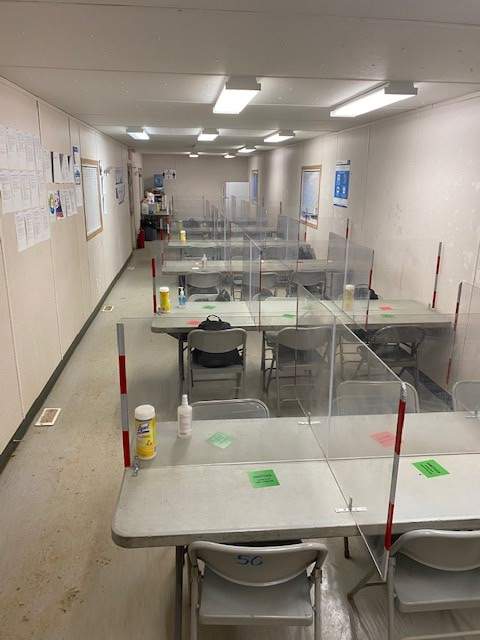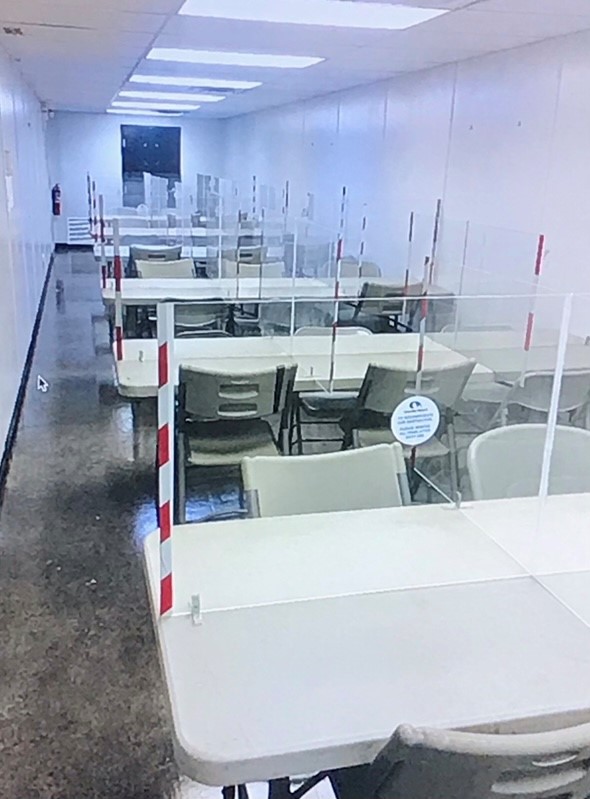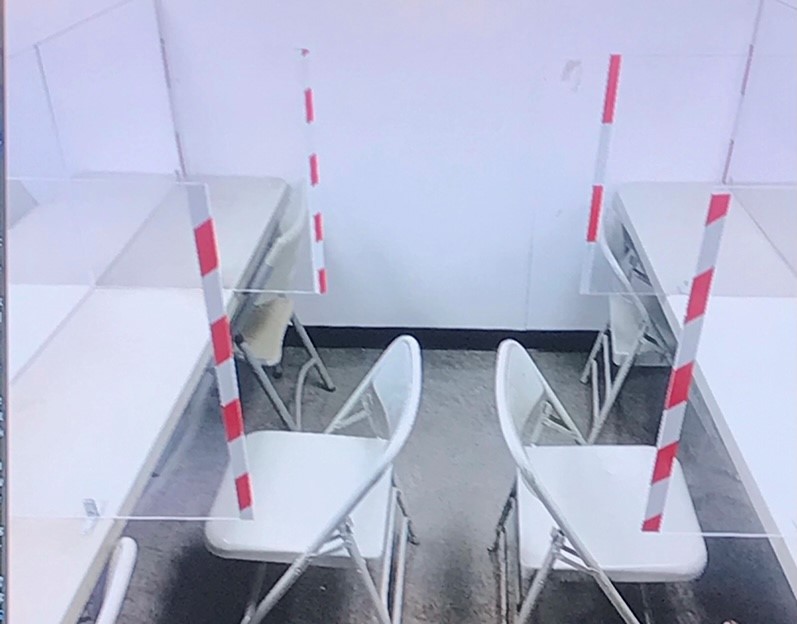An outbreak of COVID-19 at Canadian Natural Resources Ltd. Horizon mine site has now grown to 1,496 cases and three workers have died.

Alberta Health says the most recent death involved a man in his 60s. His family says he was a father of two and grandfather of seven. The pipefitter had been one of the thousands of tradespeople brought to site in late March and early April to help with a maintenance project known in the industry as a turnaround.
Some of those tradespeople are now alleging that camp conditions at mealtimes may have put them at risk of infection.
Carl arrived on-site at CNRL Horizon on March 23. Carl is not his real name; Global News has agreed not to identify him in order to protect his employment.
Carl said he tested positive for COVID-19 on April 18, and although he does not know how he became infected, he said he felt some situations at camp did not feel safe — including mealtimes.
Another contractor shared two photos of a trailer he said was used for serving meals on site. Global News shared the photos with three other workers, including Carl, who say these photos accurately show how tables and chairs were positioned for meals during the turnaround.
The photos show a series of tables in a narrow trailer. Each table seats six and there are plexiglass partitions between each seat. There is room for only one table in each row but the tables are positioned close together and there is very little room between each row.
“It’s really, really cramped. You’re basically sitting back to back, so you are sitting there eating your lunch, you’re exposing yourself to everyone around you,” Carl said in an interview with Global News.
Another worker who has also asked not to be identified says he was asked to use a similarly configured trailer at mealtimes during the turnaround as well.
“They fit six people to a table and six tables per lunch trailer. 36 workers in a trailer. That is the exact situation my shift was forced to sit as well,” the worker told Global News in an email.

Get weekly health news
“Fortunately, we only had about 34 workers required to use it and break times were split However, many companies didn’t have the ability to do that.”
A spokesperson with Canadian Natural Resources says the photographs obtained by Global News would not have been used for meals on site.
“Our protocols included staggered breaks to ensure that trailer capacity was maintained at half to allow for appropriate distancing and six feet of separation,” Julie Woo said in an e-mail to Global News.
Woo said the photos sent to Global News “indicate to us a room that was clearly closed and not for use . This configuration does not have sanitization stations, signage, and required distancing in place.”
She also included another photo of “a typical room that was used for lunch breaks during turnaround. Each lunch area is equipped with sanitization supplies and the tables are set a distance of 6 feet apart.”

“There are partitions extended past the end of the table for each eating station. Masks were mandatory and removed only while workers were eating in their stations,” said Woo. “These protocols were reviewed and audited by AHS officials.”
When pressed about the number of people per trailer, Woo said there were rules set out to prevent overcrowding.
“Canadian Natural’s direction provided to contract companies on site was to coordinate staggered breaks for their staff with a maximum of 18 partitioned lunch stalls (half capacity) to be occupied over each lunch period.”
Global News sent both the photos obtained by CNRL workers and the photo supplied by CNRL to Alberta Health Services for comment. Officials from AHS said that they were working with CNRL to review safety practices and control measures in the workplace.
“In some settings, physical distancing may not be feasible based on the physical layout or space. In these instances, we work with the operator to develop safe, alternate control measures as required to reduce potential spread of COVID-19. Alternate control measures include: use of barriers, reducing occupancy levels, staggering meal times, well defined seating arrangements to increase physical distancing among occupants, and other control measures that reduce the likelihood of disease transmission,” spokesperson Kerry Williamson said in an email.
“The layout of the dining areas was discussed with the site. Because the tables are closer than two metres, the site implemented additional control measures such as enhanced barriers and staggering meals times so that only every other spot/table is occupied as appropriate.”
Craig Jenne, an infectious diseases expert at the University of Calgary, says the lunchroom photos provided by the CRNL worker are concerning.
“We don’t know exactly how those facilities are used, I don’t know what the ventilation is but there appears to be an awful lot of chairs and an awful lot of tables and even if people are seated and eating within these little shields, people are moving around, entering and exiting the dining hall and that brings people within the two-metre separation, including people not wearing masks while they’re eating.
“We do know that whether we term this an aerosol or say (the virus) is droplet-transmitted, it’s moving through the air and I think people fail to realize that simply being two metres apart is not a bulletproof solution. It reduces the risk but, again, when we’re talking about the infection levels that we’re seeing in a number of communities, the odds of multiple infected people being in a given space is actually quite high.”











Comments